A Guide Book "LONDON - the Capital of Great Britain"
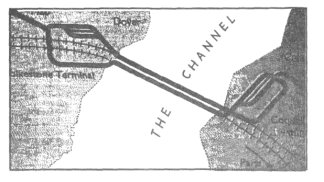
You can cross the Channel by ferrying or through Eurotunnel.
Eurotunnel is a complex of three tunnels under the water.
Work began on Eurotunnel in 1987. Eurotunnel was built by Anglo-French engineering company. In fact, there are three parallel tunnels. A smaller central service tunnel was built to be used by workers and engineers for maintenance work and emergencies. The two outer tunnels, carry high-speed passenger and freight trains. Cars and lorries are transported by train.
Now journeys between Britain and Europe are quicker.
SIGNS ВИВІСКИ І НАДПИСИ
ATTENTION! (CAUTION!) УВАГА!
CHEMIST'S АПТЕКА
ENTRANCE ВХІД
EXIT ВИХІД
EMERGENCY EXIT АВАРІЙНИЙ ВИХІД
WAY-OUT ВИХІД
WAITING ROOM ЗАЛ ОЧІКУВАННЯ
ENQUIRIES, INFORMATION ДОВІДКОВЕ БЮРО
TIME-TABLE РОЗКЛАД РУХУ
DEPARTURE ВІДПРАВЛЕННЯ
ARRIVAL ПРИБУТТЯ
NOTICE ОГОЛОШЕННЯ
NO SMOKING НЕ КУРИТИ
TO THE PLATFORM ВИХІД ДО ПЛАТФОРМ
FIRST AID, AMBULANCE ШВИДКА ДОПОМОГА
CLOOK-ROOM КАМЕРА СХОВУ
STAFF ONLY ТІЛЬКИ ДЛЯ ЕКІПАЖУ
PULL ДО СЕБЕ
PUSH ВІД СЕБЕ
NO ENTRY ВХІД ЗАБОРОНЕНО
Prepared by
Lilia Svintitska


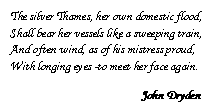

![]()
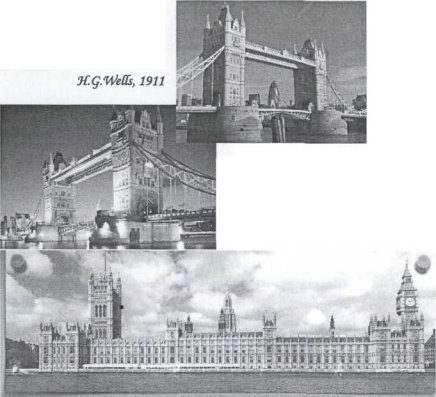
![]()
Welcome to the capital of Great Britain — London! See London's major sights on an open-top double-decker bus. Original sightseeing buses start every 15 to 20 minutes and one journey takes about 1,5 — 2 hours depending on routes.
The City Sightseeing Tour (Red Route) is recommended for foreign visitors and children. It includes the best of London's sights with a commentary in many languages. Madame Tussaud's, Piccadilly Circus, the National Gallery, Nelson's Column and Trafalgar Square, Big Ben and Parliament, St Paul's Cathedral, Tower Bridge, the Tower of London, Westminster Abbey and Buckingham Palace.
The Original Tour (Yellow Route) is the first choice for the English-speaking tourists. It takes you to the best of London's sights with our fully qualified guides. The National Gallery, Nelson's Column and Trafalgar Square, Big Ben and Parliament, St Paul's Cathedral, Tower Bridge, the Tower of London, Westminster Abbey, Buckingham Palace and the Changing of the Guard and finally Piccadilly Circus.
The Green Route: the British Museum, Trafalgar Square, Big Ben, Buckingham Palace.
The Blue and Purple Routes include the best of London's museums, palaces and great shopping areas. Nelson's Column and Trafalgar Square, Natural History Museum, Science Museum and Madame Tussaud's. These tours run daily every 25—35 minutes from 8.15 am until 10.15 pm.
How people travel.
London has got very many famous places but its transport is famous, too. More then eight million people live in London. How do they travel?
by car/ taxi — 45% on foot — 7%
by train/ the Tube — 33% by bike — 5%
by bus — 10 % by motorbike — 2%
London buses.
- London buses are mostly red.
- There are 20,000 buses in London.
- Every day 4,5 million people go on a bus in London.
- Most double-deckers have a conductor.
- Buses stop only at bus stops.
-
It's one of the British customs to stand in a straight line if
they are waiting for a bus.
- People mustn't smoke on a bus.
London taxis.
- London taxis are mostly black.
- They are called black cabs.
- There are 18,300 taxis in London.
- Taxi drivers study for 2 years and take a test before they drive.
- Taxis are more expensive at night, on Sundays and public holidays.
There is a legend that if the ravens disappear from the Tower, the Tower will fall.
The Ceremony of Keys happens every night at 10 pm at the Tower of London. It goes back to the Middle Ages. Five minutes before 10 the Headwarder comes out with a bunch of keys and an old lantern. He goes to the guardhouse and cries, "Escort for the Keys!" Then he locks the three gates and goes to the sentry who calls, "Halt! Who comes here?" The Headwarder replies, "The Keys!" "Whose Keys?" demands the sentry. "Queen Elizabeth's Keys," comes the answer. So the Keys are carried to the Queen's House where they are safe for the night.
The Thames, the "noblest river in Europe", has a number of bridges and tunnels, but until 1750 London Bridge was the one and only.
During the day, many Londoners enjoy shopping at the city's large department stores, its many small specialty shops, and the colourful street markets that sell everything from fresh fruits and vegetables to jewelry, clothing and antiques. Popular street markets include Petticoat Lane (Middlesex Street) market, in the eastern part of the City; Berwick Street market, in Soho; and Portobello Road market, near Kensington Gardens.
- Westminster Cathedral, built between 1895 and 1903, is composed of red brick and grey Portland stone. More than 100 different kinds of marbles were used for its decoration.
- The eight Royal parks of London are former royal hunting grounds which are now open to the public.
- Until the 1970s, most of the national newspapers were concentrated in Fleet Street. In the 1980s, they moved to new places, but Fleet Street is still used as a term for the national press.
- London has the largest student population of any British city. The University of London, with over 125,000 students, is the largest university in the United Kingdom and in Europe. It includes over 50 colleges and institutes.
- In January 2005, The Guardian newspaper published a survey which stated that there were more than 300 languages spoken in London.
Wembley Stadium is one of the world's most famous football stadiums, it is England's national stadium for football. Pele said of it: "Wembley is the church of football. It is the capital of football and it is the heart of football". It is the largest roof-covered football stadium in Europe seating 90.000 people.
EUROTUNNEL
If you want to get to Great Britain you need to cross a stretch of water which separates the country from Europe. It is the English
Channel.
IT’S INTERESTING TO KNOW
Measurements System in Great Britain
Length
12 inches (in) = 1 foot (ft)
3 feet = 1 yard (yd)
1,760 yards = 1 mile
1 centimetre (cm) = 0,39 inches (in)
1 inch = 2.54 centimetres (cm)
1 mile = 1.61 kilometres (km)
Weight
16 ounces = 1 pound
14 pounds = 1 stone
112 pounds= 1 hundred weight (cwt)
20 hundred weight = 1 ton
1 pound = 0.45 kilograms (kg)
1 kilogram = 2.2 pounds 1 ton = 1.016 tonne
Capacity
- pint (pt) = 20 fluid ounces
- pints = 1 quart
4 quarts = 1 gallon
1 bushel (bu) = 8 gallons
1 gallon = 4.55 litres
Area
4,840 square yards (sq.yds.) = 1 acre
1 acre = 0.41 hectares
1 hectare = 2.47 acres
Money of Great Britain
one penny
two pence, twopence
five pence
one pound
five pounds
Clothing Sizes
Women's Clothes
8 10 12 14 16 18
36 38 40 42 44 46
Men's Shirts
14 14,5 15 15,5 16 16,5 17 17,5
36 37 38 39 40 41 42 43
Shoes
3 4 5 6 7 8 9
36 37 38 39 40 41 42
* * *
There are 600 rooms in Buckingham Palace.
The Mall is a street that connects Trafalgar Square and Buckingham Palace.
London Underground (the Tube).
- There are 275 stations in London.
- Every hour 150,000 people go on the Tube.
- Rats and mice live in the Tube.
- The trains run all day and most of the night.
- There are 10 basic lines. Each line has a name and a colour.
-
You can get a free pocket map of the Tube at each
Underground station.
Buying your ticket.
- There are 6 zones in London Underground. The price of the ticket depends on the distance: the farther you go, the more you pay.
- You can buy a single or return ticket or a travel card. With a travel card you can travel on London Underground and most buses within the zones you choose.
- Children under 5 travel free. Those between 5 and 15 buy a cheaper ticket.
English Character
English people are reserved. It's their best known quality. A reserved person doesn't talk very much to strangers, doesn't show much emotion. He or she never tells you anything about himself or herself. If an Englishman is travelling by train he will try to find an empty compartment. If there are two strangers in a compartment they can travel many miles without talking to each other. The great topic of conversation between strangers in Britain is the weather.
Englishmen are also very modest. If a person, for example, is very good at tennis, and someone asks him if he is a good player, he will probably give an answer like "I'm not bad", or "I think I'm quite good."
English sense of humour is famous around the world. The ideal sense of humour is when you can laugh at oneself. "He is a man of humour" or "He has no sense of humour" are the phrases that you can often hear in Britain.
English people are well-disciplined. They have very good manners and know how to behave. They are very polite: they never use bad expressions. When they are in a shop or waiting for a bus they always stand in line.
CLOTHES AND SHOPPING IN BRITAIN
The British are the world's worst shoppers. They never know what they want, when they go shopping, particularly when they go shopping for clothes. They always ask for advice and they believe the shop assistant who says "It suits you perfectly, Madam", or "Purple is just the right colour for you, Sir."
Englishmen do not, as a rule, like bright colours, extravagant hairstyles, very tight trousers, short shorts or very fashionable things. British people in general don't care much about clothes.
WHAT IS LONDON?
Speaking about London you should remember that it is unlike any other city in the world. It has wide streets but low houses. This city has never been planned and it has many parts which are different from each other.
Modern London is really three cities: the City of London, a commercial and trade centre, the City of Westminster (the West End) that can be called the historical centre of London with lots of historical places and famous parks, and the City of Southwark (the East End), where workers live.
London stands on the deep river Thames, which runs into the North Sea, so all kinds of ships can come into a London port.
There is so much to see in London that even Londoners can always find new places of interest.
They like to say: "When a man is tired of London, he is tired of life."
THINGS TO SEE IN LONDON
St Paul's Cathedral
It is the greatest work of England's greatest architect, Christopher Wren. The Cathedral was begun in 1675. It was opened in 1697 but was finished only in 1710, when Wren was almost 80 years old. Some famous men of England have got their memorials there.
Downing Street
Number 10 Downing Street has been the home of the British Prime Minister since 1735.
The Houses of Parliament
Its official name is the Palace of Westminster. It is the place where members of British Parliament work. At the north end there is a famous clock tower, Big Ben. In fact Big Ben is really the name of the bell in the tower not the clock.
Madame Tussauds
This famous museum has got wax models of famous people from pop stars to prime ministers. There is a gift shop.
The Tower of London
It is the oldest building. Since it was built in 11th century, this castle has been a royal palace, a prison, a zoo and many other. Today it's a museum and houses the Crown Jewels.
The Royal Observatory, Greenwich
It is 10 miles outside London on a hill above the River Thames. The Observatory has got telescopes and displays about astronomy. There is a video theatre and a souvenir shop here.
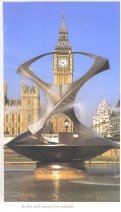
unique - єдиний у своєму роді, унікальний
rarity - рідкість
Mausoleum of Halicarnassus - мавзолей Халіканаса
Madam Tussaud's - мадам Тассо
luxurious - розкішний
to advertising —поміщати оголошення
cosmopolitan - космополітичний
to commemorate - служити нагадуванням
coach - автобус
Stock Exchange — фондова біржа
Beefeaters — лейб-гвардієць охорони
to char - палити, обвуглювати
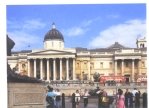 charcoal - деревне вугілля
charcoal - деревне вугілля
funeral - похорон
Tomb - могила
destination - місце призначення
to hesitate — сумніватися,
соромитися
to wobble - хитатися
make appointments - домогтися про зустріч
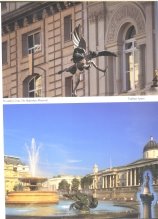 book a hotel — замовити готель
book a hotel — замовити готель
luxury - розкіш
timetables - розклад
request stop - зупинка за вимогою
unfortunately - на жаль
upstream - уверх по течії
downstream -униз по течії
for instance - наприклад
escape - уникнути
amazing variety - вражаюче різноманіття
especially - особливо
curiosities - дрібнички
antiques - антикварні речі
performer - виконавець
take away food - давати їжу на виніс
mashed potato - картопляне пюре
set menu - комплексний обід
tip – чайові
a la carte - меню
experience - досвід
commission charge - комісійний збір
wealth – багатство
wax statues - воскові фігури
macabre - жахи
the London Dungeon - лондонська темниця
LONDON
Royal Family of Windsor
Windsor is the surname of the royal family of Britain. In 1917 George V changed his family's surname from Saxe-Coburg-Gotha to Windsor..
The long German surname was the family name of Albert, the husband of Queen Victoria. She was George V's grandmother. When George V died in 1936, his first son became King Edward VIII. Edward was born in 1894; a year before his brother, George. Edward wanted to marry Mrs Wallis Simpson, but she was divorced. He couldn't be king any more, so his brother George became king.
In 1923 George married Elizabeth Bowes-Lyon. Their daughter Elizabeth was born in 1926 and another daughter, Margaret, was born in 1930. George became King George VI in December 1936. He died in 1952 and his daughter Elizabeth became Queen Elizabeth II. She married Philip Mountbatten, the son of Prince Andrew of Greece, in 1947. Queen Elizabeth has got four children. Charles was born in 1948, Anne in 1950, Andrew in 1960 and Edward in 1964. One day Charles is going to be King Charles 111, surname Windsor.
The Queen's heir Charles, Prince of Wales, married Lady Diana Spencer and has two children, Prince William and Prince Harry. Diana, Princess of Wales, won the affection of many people by her modesty and beauty. She was widely admired for helping children through the charities and her support for the aged and ill, particularly AIDS sufferers. She died tragically in a road accident in August 1997-The Queen Mother, the widow of the late King George VI continued to carry out many public engagements every year till her death in April 2002.
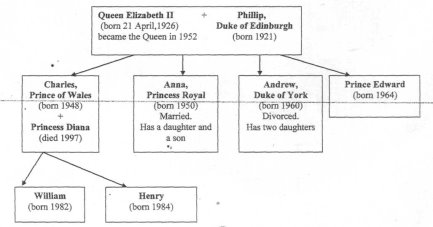
Boats go as far east as the Thames flood barrier. If the level of the Thames ever gets too high, walls can rise up from the river bed to block off the water, and so prevent the City from flooding. At the barrier the boat turns round for the return journey to Central London.
The Parks of London
London is very busy, but it is possible to find peaceful places, one of its many parks, for instance.
London is really a city of parks. The parks of London are a place where Londoners and visitors can escape from the noise of the city streets.
St. James's Park is between Buckingham Palace and Westminster.
In Kensington Gardens there is the Albert Memorial and opposite, the Royal Albert Hall - London's largest concert hall.
London Zoo is in Regent's Park. It has a large collection of birds and animals from all over the world.
South of the River Thames at KewGardens there's an amazing variety of plants. Here, at Kew you can, find the Royal Botanical Garden. In the palm house there is almost every known variety of palm tree.
Shopping
London's streets are always busy with people shopping. There are many large department stores like Selfridges, and the world-famous Harrods.
A lock on a canal at Camden in North London is sometimes peaceful during the week. But at the weekends it becomes a focus for street life of all sorts. The whole area becomes a weekend market, especially for clothes, curiosities and antiques.
West End is famous for its shops. Many visitors come to London just for that. You'll find almost anything somewhere in London from expensive luxury goods to the relatively cheap goods sold in markets all over London.
Leadenhall is a food market. It's one of the several markets in the City, the business area. In the 1960s there was a big fruit and vegetable market in Covent Garden. But the market became too crowded and in 1974 it was moved to another part of London. Today the buildings are the same. But there are cafes and small shops and open-air stalls. Many of the stalls sell handmade things. Besides, it's a favourite spot for street performers.
Eating out
In London you can try the cooking of almost every country in the world. Many restaurants and cafes do take away food. Perhaps the best known is the British "Fish and Chips", a very simple dish, but something you must try.
Some old cafes in Greenwich specialize in "Pie and Mash". That's another traditional dish which consists of a pie, usually a meat pie, and mashed potato. It's simple, but tasty — and it's cheap. The family who own the cafe have been making pie and mash for generations.
The meal is served either with "gravy", that's a dark meaty sauce, or parsley sauce, which they call "green liquor".
If you ask for just a coffee or tea, you would usually get milk in it. So it's important to ask for a black coffee if you don't want milk in it.
Whatever your taste or your budget, you can find the restaurant you are looking for in London. In many restaurants you are offered a set menu or a la carte. A set menu is a fixed price meal rather than the a la carte, where you choose from a wide variety of dishes, which are individually priced. People usually leave a 10 % or 15% tip, but check first, whether or not service is included in the price.
Pubs are also an important part of London's social life.
Theatres. Museums
An experience not to be missed is a visit to a West End theatre. You can get tickets direct from a theatre or from a ticket agency. This place in Leicester Square gives very good value. You can buy tickets for various plays and musicals, but only on the actual day of the performance. The tickets are half-price and the commission charge is quite small.
Like any capital city London has a great many cultural places. The Royal Festival Hall is one of a number of fine concert halls. There's a range of art galleries from the great national collections to smaller, more unusual exhibitions. But the greatest cultural wealth of London is its museums.
The National History Museum displays all aspects of animal life-from man to wild animals and even right back to dinosaurs. The British Museum is one of the largest and greatest in the world. Among its many treasures are wonderful collections from the far distant past and exotic pieces from far distant places. There are also more unusual museums. At Madame Tussaud's you can see wax statues of the famous. If people lose their fame, their statues are melted down and the wax is used for those whose fame is more recent. The original Madame Tussaud made death masks of those guillotined during the French Revolution.
And if you're interested in the macabre, the London Dungeon might be to your liking. If astronomy is your interest, there's the planetarium.
As Samuel Johnson said, "When a man is tired of London he is tired of life".
Vocabulary:
Commercial and trade - комерційний і торговий
Wren [rеп]- Рен
a prison ['prizn] - в'язниця
the Crown Jewels - королівські коштовності
Observatory - обсерваторія
astronomy - астрономія
be buried- бути похованим
a portrait - портрет
heir - спадкоємець
affection -любов
particularly - особливо
sufferer—який страждає
terraced- будинки, які примикають один до одного
to attach — приєднувати
to renovate - обновляти; відновляти; освіжати
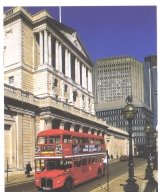 semi-detached - напіввідділений
semi-detached - напіввідділений
suburb — пригород; околиця
belt-зона
to commute—робити щоденні поїздки
landowner - землевласник
to thatch - крити соломою
slums - нетрі
outskirts — околиця, передмістя
shadow - тінь
sundial - сонячний годинник
Babylon — Вавилон
St Stephen - святий Стівен
Bloomsburry - Блумсбері
church - церква
entertainment - розвага, забава
engine - паровоз
shed— навіс, сарай
applied arts - прикладне мистецтво
merchant - купець, торговець
purchase - покупка
Hogarth - Хогарт
Gainsborough - Гейнсборо
treasure — скарб
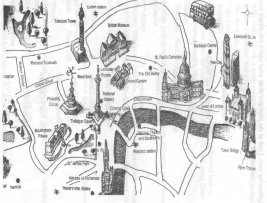 Westminster Abbey
Westminster Abbey
is a historic building in
London. It was founded
in the 11th century.
Many of Great Britain's
famous men are buried
in the abbey.
Piccadilly Circus
is a square in the central
part of London.
London's well-known
theatres and cinemas
are on Piccadilly Circus.
This is the square that is round, not square like many other places.
Trafalgar Square is in the centre of the West End. On the north side there is the National Gallery, in the north-east corner there is the National Portrait Gallery, and in the centre there is Nelson's Column with a figure of the great seaman.
Buckingham Palace is a place where British Queen and her family live. In front of the palace, there is a Monument to Queen Victoria, who was one of the most favourite British queens. She ruled more than any other and helped make England strong.
The new Globe Theatre opened in London 1997.
It looks the same as the one in which Shakespare worked.
LONDON’S STREETS
Piccadilly – the Heart of London
 Trafalgar Square
Trafalgar Square
Whitehall
Downing Street
The Strand
Regent Street
Oxford Street
Bond Street
Threadneedle Street
Fleet Street
Harley Street
Carnaby Street
Covent Garden
Charing Cross
Soho
Cockney Country
Travelling around London
The Underground is the quickest and easiest way of getting around the whole of London. Londoners call the underground "Tube", and use it very extensively.
"Tube" trains run from approximately 05.30 to 24.00 hrs Mondays to Saturdays, 07.30—23.00 hrs on Sundays. The underground stations are convenientJy located — simply look for the London Underground circular symbol in the street and you will soon find it. There are 10 basic lines plus the East London line and the Docklands Railway. Each line has a name but you'll probably find the colours easier to remember. Most lines have branches, so be sure to note which branch you need. Destinations are shown on the front of the trains and on platform indicators. Electronic signs on the platform tell you the final stop and route of the next train. There are also platform signs which indicate how many minutes you'll have to wait for the train to arrive. A pocket map of the Tube network is available for free from each Underground ticket counter. There is also a large map on the wall of each platform. Once you got the underground system right you' II find it very easy to use. If you have some problems, don't hesitate to ask the underground clerks or the passengers to give you directions — they are usually eager to help.
GUIDE TO LONDON
Arriving. Hotels
Most visitors come to London by air, landing at London Heathrow or London Gatwick. Both airports have good links to the centre of London. The journey takes less than an hour. Airports are big and confusing places. But there are plenty of people to help you, whatever you want to do. You can get information at the airport, make appointments or even book a hotel. If you're looking for luxury, there are the modern international hotels and the classic British hotels, famous for their personal service and their elegance. But in areas like Earl's Court in West London and around the main railway stations you can find smaller hotels, guest houses and bed-and-breakfast places, not so grand and more suitable if you are on a lower budget holiday. But after a tiring flight to London you might want to spoil yourself and spend your first night in one of the Airport hotels, just a few steps from the plane.
Getting around
A sightseeing tour in an open top bus is an excellent way to start your stay in London. To help you use normal buses you can get bus maps from most underground stations. Timetables are shown on bus stops. If the stop is a request stop, you must put out your hand to stop the bus.
If you've got the money, you can always take a London taxi. When a taxi is free for hire, its sign will be lit up.
People usually give the driver a 10 or 15 % tip.
Buried deep beneath the streets of London is the underground or tube. Apart from the rush hour it's a quick and easy way of getting around. There are tube stations all over and trains are very frequent. When you go on the tube you need to know which line to take and which direction you're going. In every station there is a map of the whole system with a different colour for each of the lines.
You can buy tickets from a person at a ticket window or from machines, where you just press for the type of ticket you want and where you're going.
Unfortunately, the longer a journey is, the more it costs, but you can buy something called a travel-card. Once you've bought that, you can make as many tube and bus journeys in a day as you like -for free.
Not as fast as the tube, but much more pleasant is to travel by river. Frequent river buses go from Westminster pier upstream as far as Hampton Court and downstream to the Tower of London, Greenwich and the Thames flood barrier.
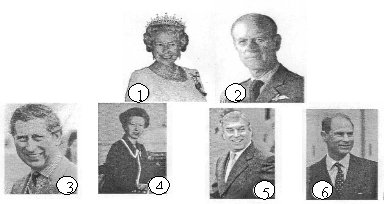
British Houses
Terraced houses are usually found in inner cities. They can be anything up to 150 years old and were often built by industries to house their workers near the factories. They are built in tong rows where each house is attached to the one on either side. The back of this type of house faces the back of another identical row of houses, so they are often known as "back to backs". In recent years many terraced houses have been renovated: central heating has been added and other improvements made to what was originally a simple and sometimes primitive home with an outside toilet and no bathroom.
Semi-detached houses have been built in large numbers since the 1930s when Britain's towns and cities expanded into suburbs. Each house is part of a pair and is joined on one side to its partner. The semi usually has a small back and front garden, three bedrooms and a small bathroom. It is the most popular type of house in Britain and could be called the home of "Mr and Mrs Average". Towns in Britain have areas which contain streets and streets of semis are often with well-kept gardens.
The detached house stands by itself, usually with a garden all around it. These houses are much more expensive than semis and are often owned by professional people. Most detached houses are to be found in affluent suburbs or in the "green belt" — a strip of protected open countryside around a city, where no industrial development or major building schemes are allowed. Some large cities (particularly London) also have a "commuter belt" — so called because the professionals who live there travel (commute) every day to work into the city by train or car. London is surrounded by miles and miles of "commuter belt". Some commuters travel up to three or four hours from their homes to their work.
Britain is famous for its country cottages which are often built on the country estates of wealthy landowners. The workers on the estate rented the cottages from the landowner and worked on the land. Cottages were also frequently built around a village. Cottages have low ceilings, wooden beams and sometimes a thatched roof. In recent years some cottages have become second homes, bought by professionals during the economic boom of the 1980s.
In the 1950s and 1960s local councils cleared a lot of the slums in the inner city areas and knocked down terraced houses in very poor areas. The people were re-housed in tower-blocks on the outskirts of the city or in the centre of the city. Tower blocks can vary from 3—5 storeys high up to 10—20 storeys high. Each storey contains 5 of 6 flats for families. In recent years local councils have tried to improve the areas around tower blocks by creating "green space", children's playgrounds and facilities for the community to use. Some tower blocks in large cities like London can be very dangerous at night and they have been criticised for their long dark corridors, which encourage crime and vandalism.
Most people in Britain feel responsible not only for their homes, but for the place and town they live in, and they do a lot to protect their surroundings. The British know that to have a happy home one should live in a happy country.
Everything about Time
When people began living together, they needed some way of telling, the time. One of the ways of telling the time was the sun. When a man planned to meet another he pointed to a place in the sky and said, "I'll meet you when the sun is there". It was also possible to tell the time by shadows. Many trees and cliffs casting shadows served as timepieces. At night one could tell the time by the stars. The first timepiece anyone made was a sundial. A sundial tells the time by shadows. The first sundial known was made in Egypt about 3,500 years ago. It was common practice to divide the time between sunrise and sunset into 12 equal parts, or hours.
No one knows why 12 was chosen as the number of hours for the day. Perhaps it was because of the number of months in the year. Later the night was divided into 12 hours, too.
Later, the water clock was invented. Water clocks were often used in Greece more than 2,000 years ago. Before true clocks were invented, fire was also used to measure the time. Striped candles, knotted ropes and oil lamps could all measure the time by burning.
The first true clocks were probably made nearly 1,000 years ago. The first watches were made about 500 years ago.
As everyone knows, there are 60 seconds in a minute and 60 minutes in a hour. We probably have 60 because 60 was a very important number to the people who lived in ancient Babylon, a land from which many of our ideas came.
We know that the time is not the same all over the world. For this reason, the world has been divided into time zones. All the places in each zone have the same time. It's called standard time.
The biggest clock bell in Britain is Big Ben.
The clock bell is called Big Ben after Sir Benjamin Hall. He had the job to see that the bell was put up. Sir Benjamin Hall was a very big man.
One day he said in Parliament, "Shall we call the bell St Stephen's?"
St Stephen's is the name of the tower. But someone said for a joke, "Why not call it Big Ben?". Now the bell is known all over the world by that name.
Some Facts about London
It is interesting to know that Bloomsbury Square is one of the oldest in London. It is more than 300 years old- It is the literary part of the city. Many writers live there.
The British Museum is not far from Bloomsbury Square and the square is famous for the Museum. The British Museum is very old. It was founded in 1753. It is in Great Russell Street. The British Museum has a large Reading Hall.
"Odeon" is one of the famous London cinemas.
One of the oldest churches in London is St Paul's Cathedral.
One of the famous London theatres, the Royal Opera House or Covent Garden, is in the centre of the vegetable market.
The River Thames is part of London's history. The Romans built Londinium beside the river. It was a small town then. Now, it is a very large city. But the River Thames is still the centre of London. Until 1749, there was only one bridge across the river: London Bridge. The old London Bridge looked very strange. There were houses and shops on the bridge. The water did not flow under the bridge quickly. Often, the river froze in winter. The water became ice. The people walked on the river. There were cafes and restaurants on the ice. In the 19th century, many new bridges were built. Now there are more than twenty bridges over the Thames in London.
Soho. No one can explain "Soho" convincingly. The legend goes that in old days there used to be green fields there and the people around went fox-hunting. When a hunter saw a fox, he called to the dog "So-Ho!" Now Soho is the district where you can see different people speaking different languages. It is famous for its restaurants of different national cooking. One can have breakfast in a Greek restaurant, dinner in Italian and supper in American. There are very few outdoor cafes here. That's because the weather changes very often and very quickly.
Museum of the Moving Image (MOMI). MOMI is all about film and television. Actors will guide you through the museum and you can act in a film or read the TV news!
Carnaby Street. This is the place to buy the latest fashions. There are lots of shops selling interesting clothes and souvenirs.
Hamleys. Six floors of toys and more toys, including computer games, dolls, sports equipment and board games.
The London Eye.
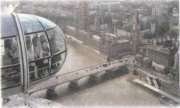
The London Eye is in London, of course, and it was designed by British architects.
However it was not made in Great Britain at all! The main part of the Eye was built in Holland. Other parts were made in the Czech Republic, France, Germany and Italy. The parts were carried to Great Britain by ship.
Then they were put together in London. It was opened to the public on February, 1 in 2000. It is called the Millennium Wheel. It is 135 metres high.
The Millennium Bridge
The Millennium Bridge is a new bridge across the River Thames in London. It was opened in 2000 by the Queen. However, it was closed again two days later because it was wobbled too much.
Two years later, on February 22nd, it was opened again. Now it is used by thousands of people every day.
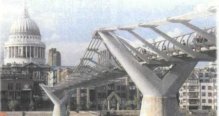
West End — Westminister Abbey— Changing of the Guard
An unforgettable tour that includes the best of London. Today you can see some of our major shopping and entertainment centres, along with some of our famous Royal Parks. In elegant Mayfair and then Kensington, we shall see the world famous department store "Harrods" and some of our remarkable museums; as well as St James's Palace and the Royal Albert Hall. Westminster Abbey gives you a chance to walk through England's history. As a Royal Church, it has been the scene of coronation and funerals of England's kings, queens, famous leaders, poets and heroes. You will see the Coronation chair, the Royal Tombs and Poets' Corner. Changing of the Guard takes place at Buckingham Palace. We leave the bus at the Mall and walk our way to the Queen's residence. (She's in, if the flag is flying.) We will watch the magic of the famous Changing of the Guard. When the Guard change does not operate at Buckingham Palace, we will visit Horseguard Parade.
Sights of London
This best selling tour of London begins with a unique look around the Royal Albert Hall. As you approach the centre of London, you see the busy streets and many buildings of different styles and ages. Everywhere, there are bright red buses and black taxis, busy restaurants and, in contrast, quiet open spaces and parks. Soon you arrive at the very centre to see the best known sights: Piccadilly Circus and Trafalgar Square.
Piccadilly Circus is the heart of London's entertainment world. Within a few hundred yards of it we find most of London's best known theatres and cinemas, the most famous restaurants and the most luxurious night-clubs. In the middle of Piccadilly Circus there is a statue said to be of Eros, the god of love. Few people know that it really represents the Angel of Christian Charity. The buildings around the Circus are large and quite imposing. Many of them are decorated with bright neon signs advertising goods and entertainments; Piccadilly Circus at night is a colourful sight. The atmosphere of Piccadilly is very cosmopolitan. You can hear around a great variety of languages. They say if you listen carefully, you may even hear English.
Trafalgar Square was built early in the 19th century to commemorate the Battle of Trafalgar. Admiral Lord Nelson's statue stands on top of a column in the middle of Trafalgar Square. The square makes a good place for people to meet — coaches pick up parties of visitors, marchers unite for protest meetings, and at Christmas time there is a Christmas tree which is sent to Britain from Norway every year. Behind Nelson's Column is the National Gallery, an art gallery in which you can find many old masters. We continue our way and stop at the Houses of Parliament.
Houses of Parliament. Close by Westminster Abbey on the riverside stands the magnificent Palace of Westminster, generally known as the Houses of Parliament. Although these buildings are in Gothic style, they are not truly historic for they were built in 1840 on the site of the old Palace which was destroyed by fire in 1834. The flag on the building shows the House is sitting. On such days both the House of Commons and the House of Lords are open to visitors. You are invited to see the unique interior of the palace, watch MPs (Members of Parliament) make speeches, argue and sometimes even fight.
Covent Garden. For centuries this has been the centre of entertainment. Today little has changed! Street musicians, noisy pubs and great restaurants, all go to help us remember the past. This is also the heart of the theatre district. You will see the Royal Opera House and the Church of My Fair Lady.
The Ancient City and St Paul's Cathedral. This is the oldest part of London and it houses most of our financial and legal institutions. You will see buildings like the Stock Exchange and the Bank of England before we arrive at St Paul's Cathedral. It was designed by Sir Christopher Wren between 1675 and 1710 and is not only the final resting place of famous soldiers, statesmen, painters and poets, but also the scene of many famous weddings — most remarkable that of Prince Charles and Lady Diana.
The Tower of London for over 900 years has guarded London from the Thames and has served as a fortress, a royal palace, a prison, a museum and a place of execution. The atmosphere in this incredible historic monument is filled with tragic memories of the past. During your visit you will be impressed by unique Crown Jewels, and will also see our traditional Beefeaters.
Charing Cross. Charing Cross is said to be one of the most ancient places in London. Once there was a small village in that place. The villagers were charing wood, making charcoal of it. That is why the village was named Charing. In 1291 Eleonor, the English Queen, died outside London. Her husband wanted her body to be taken to Westminster Abbey and buried there. At every place where the funeral procession stopped a wooden memorial was built. The last place was at Charing and since then the place is called Charing Cross. Nowadays Charing Cross Road is famous for its bookshops where one can buy Books in different languages and of new and old editions.
London
Dr Johnson said, "There is in London all that life can afford". If he were alive today, the great conversationalist would probably feel that in London there is more than life can afford. There are more than 50 theatres in London, mostly concentrated in a part of the West End that has become known as "theatreland". They range in size from the tiny May Fair, seating 310, to the giant Coliseum with 2,352 places.
The oldest theatre is Drury Lane, which opened as the Theatre Royal in 1663, although the present building dates from 1812. The newest is the National Theatre, opened in 1976 and combining three theatres under one roof— the Olivies, Lyttelton and Cottesloe.
Productions are various enough to suit all tastes: opera and ballet at the Coliseum and Covent Garden; musicals at Drury Lane and the Palace; variety at.the Palladium; Shakespeare at the Old Vic.
Other London theatres have changed their roles, but still offer entertainment. For example, the old Hippodrome, in Cranbourn Street, is now the Talk of the Town, a theatre-restaurant where dinner and a stage show are offered. The Lyceum, just off the Strand, has been a dance hall since the Second World War.
One building whose designer never meant it to be a place of entertainment is the Round House in Chalk Farm Road, NW 1. It was built as an engine shed in 1847, and in 1967 was reconstructed as an arts centre.
The Best London Museums
Victoria and Albert Museum
It's an outstanding museum, displaying applied arts of all disciplines, all periods, all nationalities, and all tastes. This museum referred to as V & A. Prince Albert, was responsible for the foundation of this permanent version of the 1851 Great Exhibition.
The Tate Gallery
It was given to the nation by a rich sugar merchant, Sir Henry Tate,*who had a taste for the fine arts. It overlooks the Thames, not far from the Houses of Parliament. English artists are naturally well represented here, and the gallery also has a lot of modern works, including some sculptures by foreign artists.
The National Gallery
It is situated on the north side of Trafalgar Square and contains Britain's best known collection of 2,200 pictures. The collection was begun in 1824, with the purchase of thirty-eight pictures. The gallery is rich in paintings by Italian masters, it contains pictures representative of all European schools of art, and of course, the best English tradition, including Turner, Hogarth, Gainsborough, Stubbs and Constable. Admission to the gallery is free, as is the case with other British national museums and galleries.
The British Museum
This is the world famous museum. There are 4 kilometres of the space inside, split into nearly 100 galleries of treasures from everywhere in the world, some as old as humankind itself. This unique collection, in brief, represents the progress of civilization. You'll find here such rarities as Rosetta Stone, carved in 196 В. С, the Mausoleum of Halicarnassus, one of the Seven Wonders of the Ancient World, the famous Magna Carta, Egyptian Mummies and a lot more unique exhibits.
The National Portrait Gallery
The collection which is arranged chronologically begins on the top floor (Level 5) with the Tudors. Each room has been given a particular historical theme. The gallery was founded in 1856 to collect the portraits of famous British men and women. The visitor c.an see portraits of British monarchs since the reign of Richard 11(1377—1399), and of historical celebrities who created (and are still creating) the history and the culture of the nation.
Madam Tussaud's
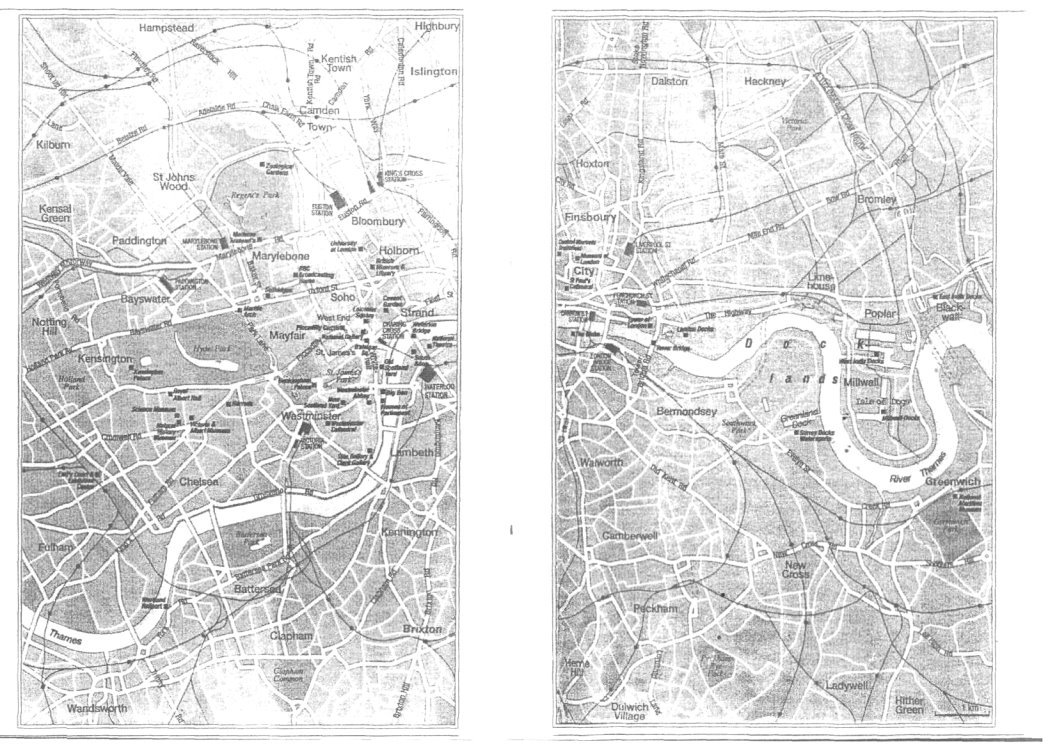 This is one of London's busiest sights. Numerous visitors to the museum can see life-size wax figures of famous people: politicians, actors, athletes and Royalty. They can also see criminals and murderers in the Chamber of Horrors. The admission fee to this museum is the highest in London.
This is one of London's busiest sights. Numerous visitors to the museum can see life-size wax figures of famous people: politicians, actors, athletes and Royalty. They can also see criminals and murderers in the Chamber of Horrors. The admission fee to this museum is the highest in London.


про публікацію авторської розробки
Додати розробку
